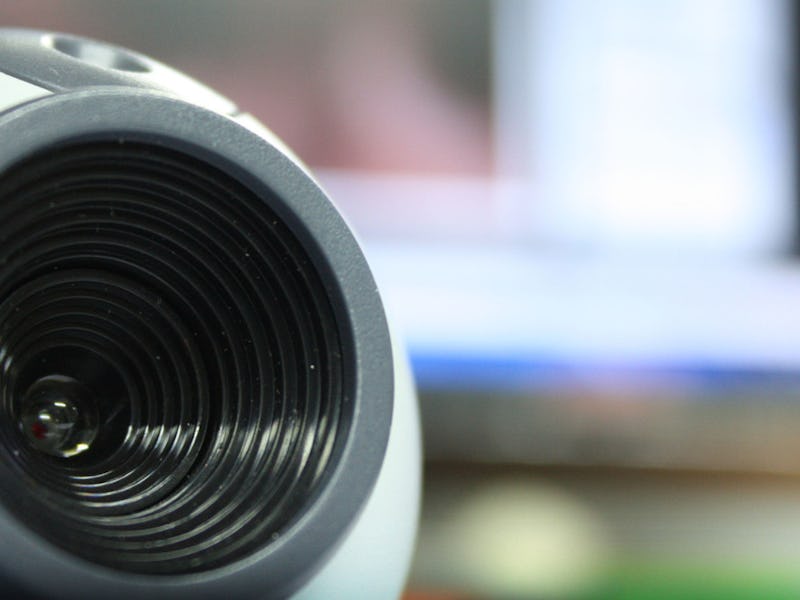The Sex Work Revolution That No One Wants to Talk About
The mainstream corporation has become the driving force behind the webcamming industry.

By Rachel Stuart, University of Kent
The development of the internet has completely transformed the way we do business; and the “oldest profession” is no exception. In a world of online chatrooms, webcam performers can market anything, from conversation to explicit sex acts. And unlike pornography or prostitution, there are virtually no laws regulating this form of sex work.
Webcamming is an easy market to enter. All it takes is a computer, a decent webcam, access to a high speed internet connection, and a webcam hosting site. The hours are flexible, the working environment is safe, and the salary can be very rewarding. The majority of performers are women, but there are also male and transgender performers.
On sites such as Chaturbate and MyFreeCams, a tipping system operates in public chatrooms. Here, payment is voluntary, and performers are tipped for performing sexual and non-sexual acts. This makes a show profitable for the performer, at a relatively low cost to the viewer.
In private chatrooms, performers are paid by the minute for a private show. Here, the customer can make requests for specific sexual acts to be performed. Unlike the public chatrooms, these performances tend to be highly pornographic.
In both public and private shows, performances can be highly interactive. Performers and customers are able to communicate with each other using keyboard, speech, and two-way cameras.
Silence of the Cams
But while consumers and producers are busy experimenting with these new capabilities, both governments and campaigners remain eerily silent. This is odd, given that the British government has increasingly taken a heavy-handed approach to regulating sexual commerce.
For example, in 2014, a new law banned certain acts from being depicted and uploaded by British pornography producers. And the [Digital Economy Bill]((https://www.gov.uk/government/collections/digital-economy-bill-2016), which is currently on its way through parliament, seeks to restrict minors’ access to pornographic material online.
Yet both laws focus on recordings, rather than live streaming; in effect, they turn a blind eye to webcamming. This creates something of a paradox: Performing an explicitly pornographic act via a webcam carries no repercussions, but if the same show is recorded and uploaded, the performer can be liable to a fine of up to £10,000 ($12,500).
Another typically vocal group which has remained strangely quiet on this topic is radical feminists. Since the birth of the feminist movement in the 19th century, women involved in sex work have been portrayed as victims in need of rescue. Today, webcam performers are challenging this contrived image.
A New Woman
Webcam performers are often highly entrepreneurial, and they harness mainstream social networking sites such as Twitter, Facebook, and Tumblr to build and maintain relationships with customers. It’s difficult for radical feminists to claim that a shrewd businesswoman – who may have thousands of fans, thanks to her clever use of social media – has been victimized by her involvement in this form of pornography.
Power in her hands.
Webcamming gives women the opportunity to reclaim profits from the traditionally male-dominated pornography industry. What’s more, they can maintain control of their image, and dictate the terms and conditions on which they are viewed – all from the relative safety of their own homes. Indeed, webcamming allows individuals access to global markets, which could give women in deprived areas a chance to raise themselves out of poverty.
But portraying the webcamming industry as a sort of online utopia for sex workers does not show the whole picture. There are dangers, too. The women I spoke to for my PhD research were worried about viewers filming and sharing their performances on porn sites, or acquiring personal information which could be used to stalk or blackmail them.
Even so, the dominant role of female amateurs in the webcam industry presents a challenge to radical feminists’ claims that the production of sexually explicit material degrades women, and that women who engage in such pursuits need to be rescued.
A Tidy Profit
While giving women a platform to conduct sex work, webcamming also generates sizeable corporate profits. Hosting sites retain between 40 percent and 65 percent of performers’ earnings, for providing chatroom and payment services and an existing customer base.
Laszlo Czero is the former CEO of jasmin.com and current consultant to streamate.com – two leading corporations in the field. He estimates that profits for webcam hosting sites will reach between $2 and $3 billion in 2016 alone. Cams.com executive Harry Varwijk estimates that profits yielded by webcam hosting will reach $10 billion by 2020. One of the most popular webcam sites – Live Jasmin – has 40m visitors a day, and has made its founder, Gyorgi Gattyán, Hungary’s richest man.
The owners of webcam hosting sites aren’t the only ones profiting, either. Every single webcam transaction passes through – and profits – the banking system. According to Varwijk, the banking system charges between 7 percent and 15 percent for providing payment facilities – much more than the 2 percent to 3 percent they usually charge.
This is supposed to be justified by the greater risk of fraud associated with the credit cards used to pay for webcam sessions. But Varwijk, who has run cams.com for 15 years, claims that only 0.03 percent of transactions result in chargebacks.
Instead of the sleazy pornographer or the shady trafficker, the webcamming industry is driven by a very different force: the mainstream corporation. With no easily identifiable victim, and an above-board financial operation, the world of webcamming has confounded law-makers and anti-sex work campaigners alike. For the moment, at least, entrepreneurial women are free to participate in a legal form of sex work, which they have the power to define.
Rachel Stuart, PhD Candidate, University of Kent.
This article was originally published on The Conversation. Read the original article.